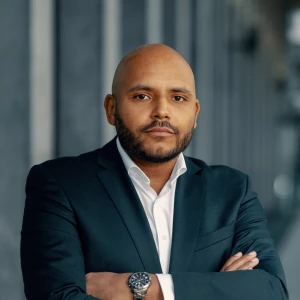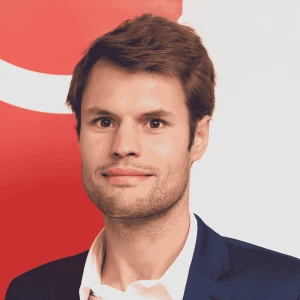What is the best reaction to have during an interview if you happen to be stuck with a Brain Teaser question for which you don't find the answer?
It doesn't happen to me so often...but yet it happens. I wonder what is the most professional reaction.
What is the best reaction to have during an interview if you happen to be stuck with a Brain Teaser question for which you don't find the answer?
It doesn't happen to me so often...but yet it happens. I wonder what is the most professional reaction.


Hi,
I think there's a couple of things you can do in that situation.
This process should allow you stay calm and composed while regaining a grip on the problem at hand.
Cheers, Sidi
Hi, good question!
Probably somewhat depending on your interviewer, but this is my view on it.
In this situation it's important to try to showcase as mluch of your consulting skills as possible. Be transparent and admit you're stuck with this. Communicate clearly, explain why you do not see the appropriate solution and suggest to brainstorm together about it.
Hope this helps!

Hi Anonymous,
as for your first question, there are two things you can do when you get stuck and want to avoid silence:
You may also do both the steps together in the mentioned order. At the below link, you can find an example of how you can do so when you have to brainstorm, together with some suggestions on how you can structure brainstorming:
As for your second question, there may be two scenarios:
Best,
Francesco

Hi,
When you get stuck there are 2 options:
1) You ask further questions. There are 4 types of questions that you can ask. Basically you can never get stuck if you ask one of these questions:
The 4th question is probably the most important if you get stuck. For example, if you know that the sales department is not performing you can ask the interviewer: "Could you please tell a bit more about existing sales process?"
2) You ask for 30 seconds and build a new structure. The most common feedback on the interviews is "You are not structured enough". To avoid this you should always be structuring. These structures can be both fully MESE issue trees or frameworks or a combination of both.
For example, if you find that we spend more time on cleaning the job shop than the other division you go with the following:
Best!

Hi Kay,
During the case interview several dimensions are evaluated.
It happens that a candidates get stuck on a specific topic and yet perform very well on other dimensionss. In that case this can work out.
In addition keep in mind that the level of expectation is higher as you progress in the rounds. So this has better chance to work out on 1st round than on 2nd. However there might a special note on your folder for the next interviewer to specifically check one particular dimension
To be completely clear, let me give you a few examples of situations wehre candidate did not perform 100% welle but could work as well ;
- Situation 1 : candidate stuck at brainstorming, but perfomed well in case resolution and structuring of the initial issue
- Situation 2 : candidate stuck at calculation, but performed well in reasoning and case progression and generating insights.
Hope this helps
best
Benjamin

Hey,
Regarding your first point: Try always to think aloud. Explain what information you have so far, what you want to determine and what information is missing, then ask for ths information. This also helps when you get lost. Do a quick synsthesis and link the new information to the objective - is it sufficient to answer the question or do you need more data.
Never skip branches, this seems as if you are not structured. I would suggest you note the interesting fact for yourself or remark that you will look into it in more detail once you finished the branch which you are analysing at the moment.
Hope this helps.

A similar situation is very common in case interviews, and I would suggest the same advice applies:
- Ask for a minute or two to think through the question. It may feel a little strange but I don't know a firm which will have an issue with you taking this time
- Secondly, the interviewer is not trying to trick you, so if you start suggesting some reasonable idea's your interviewer may well help steer you. They are not testing your ability to answer an individual question, but far more how you think. The best candidates don't always get the answer right first time
Hope that helps!
Cameron

Hi,
When you get stuck there are 2 options:
1) You ask further questions. There are 4 types of questions that you can ask. Basically you can never get stuck if you ask one of these questions:
The 4th question is probably the most important if you get stuck. For example, if you know that the sales department is not performing you can ask the interviewer: "Could you please tell a bit more about existing sales process?"
2) You ask for 30 seconds and build a new structure. The most common feedback on the interviews is "You are not structured enough". To avoid this you should always be structuring. These structures can be both fully MESE issue trees or frameworks or a combination of both.
For example, if you find that we spend more time on cleaning the job shop than the other division you go with the following:
Best!

Hey Kay,
Really good answers above (or below?). One important thing to add is that an interviewer evaluates your process more than anything else. He / she is not interested in the answer to the case (they know it already...) but in how you get there. If you get stuck, it's a great moment to display that you have the composure and attributes to get out of the pickle while keeping a professional attire. As such, an interview is a bit like show business - The show must go on!
A great correction or recovery from a case that has gone slightly south is often a great way for the interviewer to get insight in your process. Do well, and you'll be surprised by the results. After all, how good can you evaluate somebody's problem solving ability if during the case performance, they don't run into the slightest little problem themselves. In short - see those moments of friction as an opportunity to display how you deal with challenges in real time!

Hi,
I would say in this case you should demonstrate something else. What can it be?
Best
Hey anonymous,
There are two major strategies that can help you in those situations:
Hope this can help
Bruno












